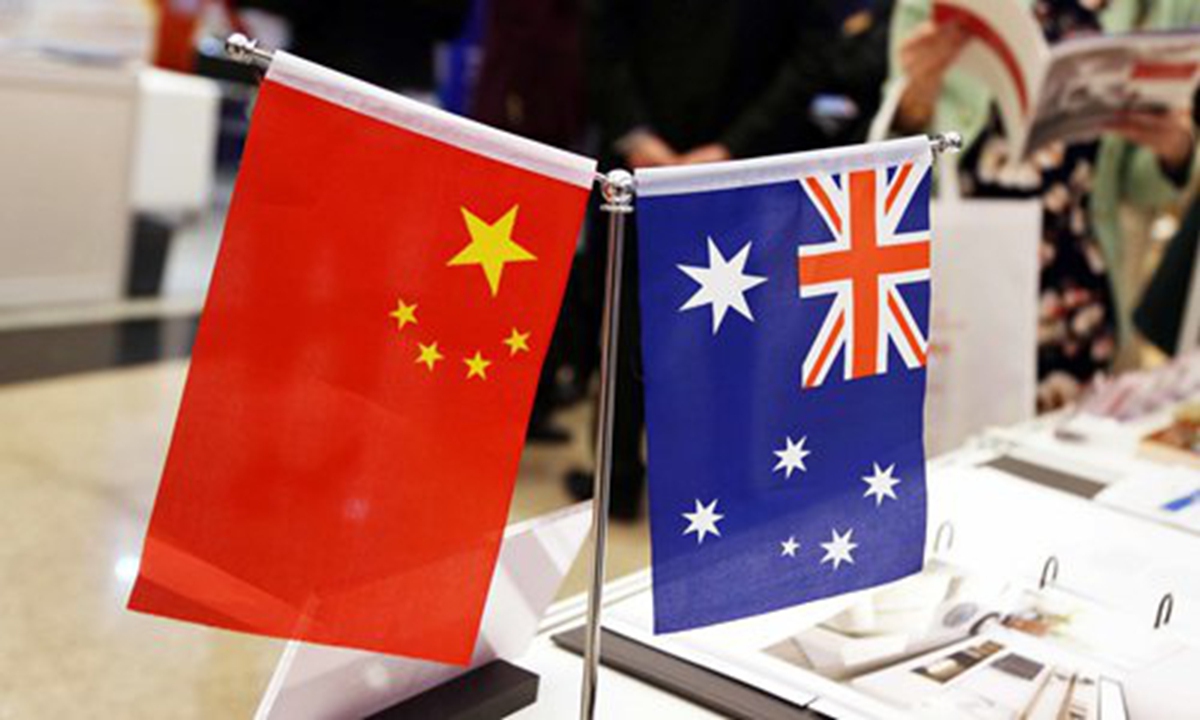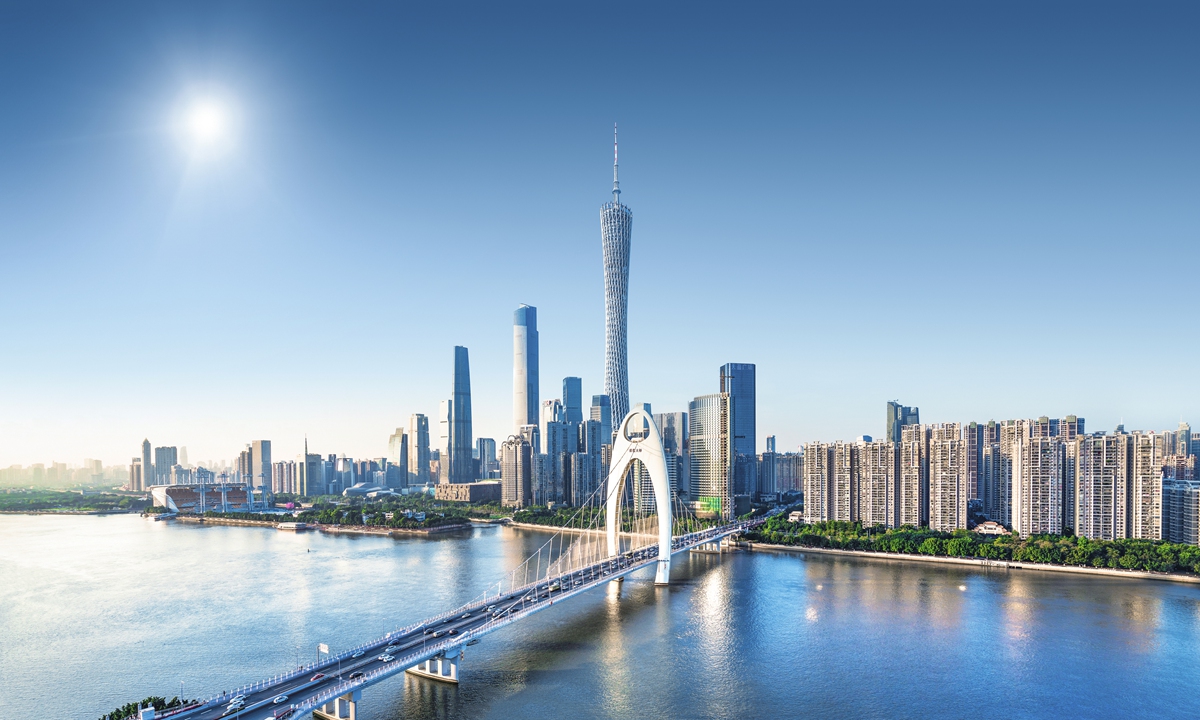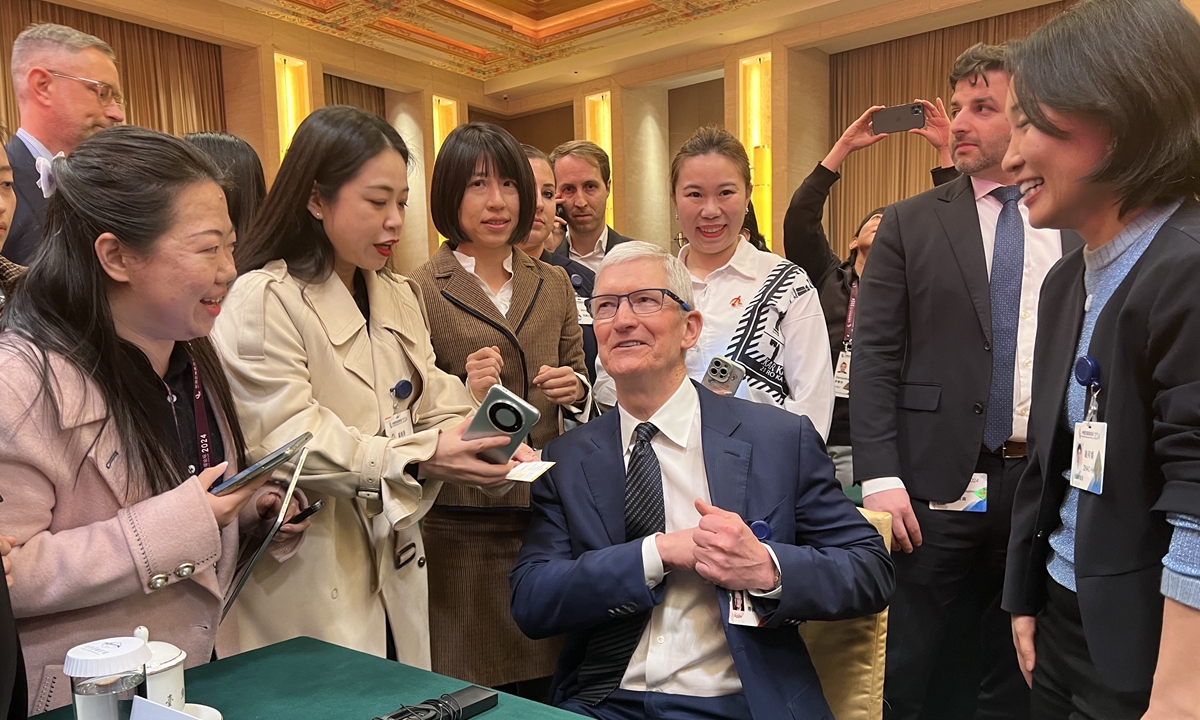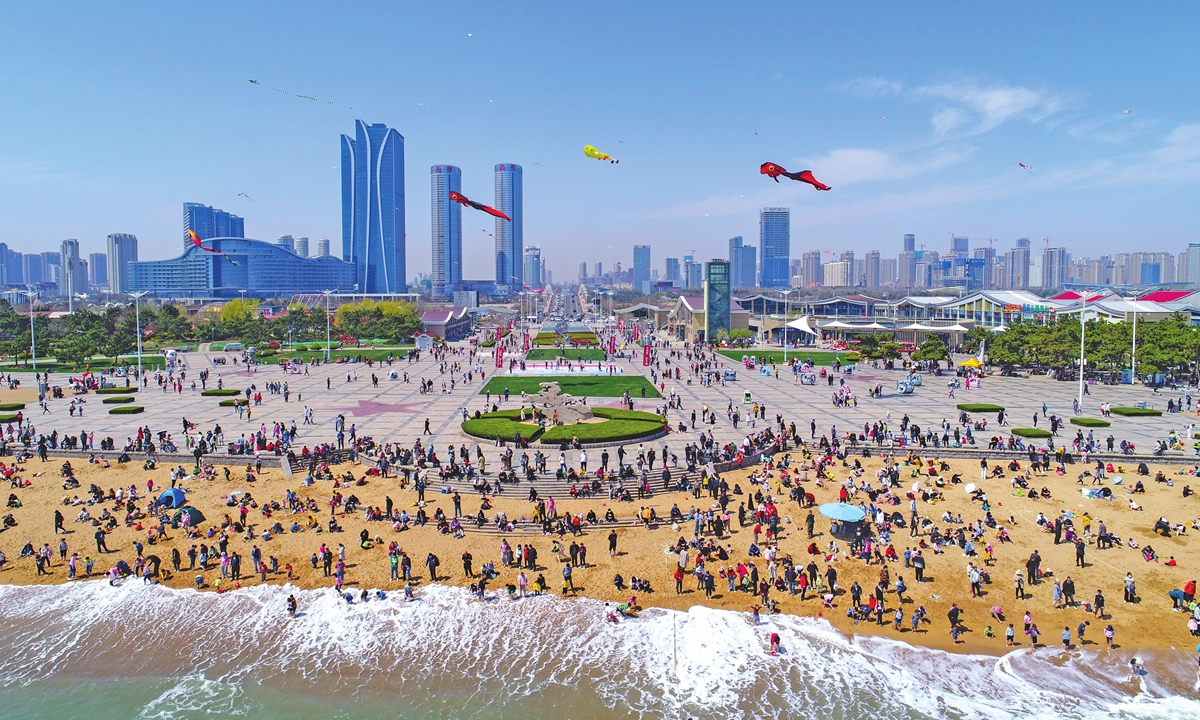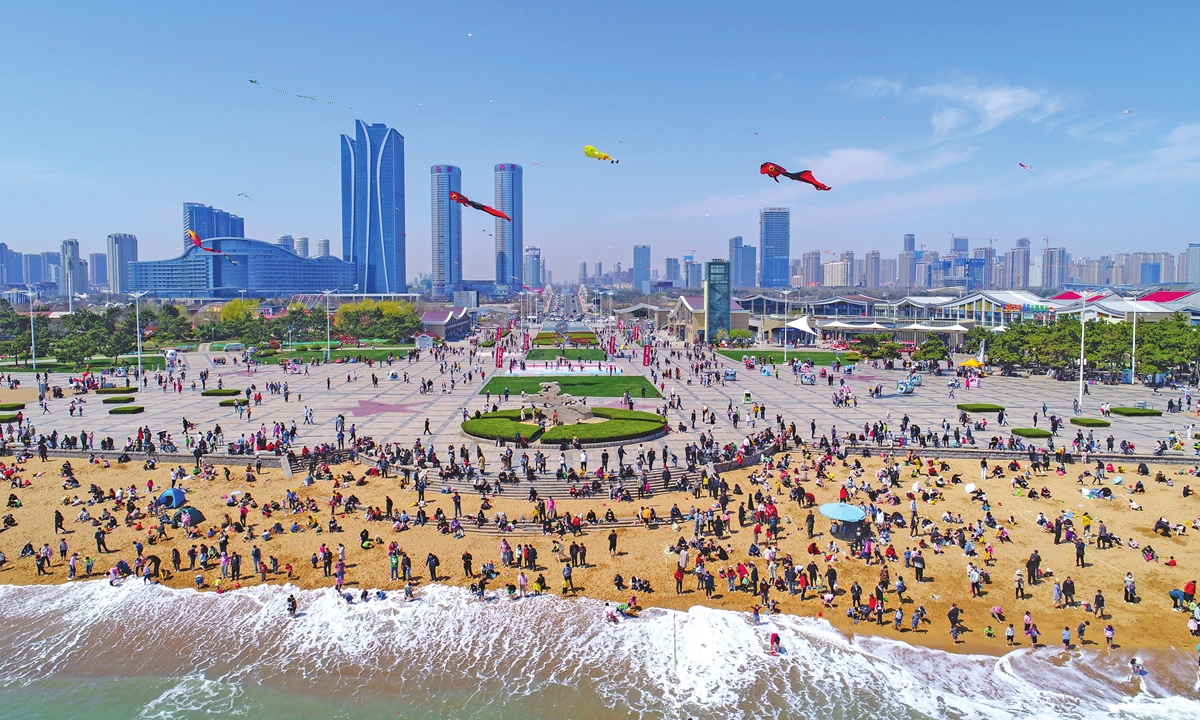
Tourists enjoy sunbathing and kites fly in the sky at an ocean park in Rizhao, East China’s Shandong Province during the Qingming Festival holiday. Photo: VCG
China is expected to welcome another tourism boom during the upcoming Qingming Festival holidays, with remarkable growth in travel and hotel bookings, according to major online booking platforms on Tuesday, further pointing to the strong recovery of consumer sentiment and consumption, a critical barometer of China’s economic vitality.
The strong travel data expected during the three-day holidays come on the heels of an increasing number of robust economic indicators, ranging from manufacturing activity to foreign trade, all painting a rosy picture of China’s economic recovery. China’s solid economic recovery has become a bright spot for the world economy, a Chinese official said on Tuesday.
The expanding set of strong data for the first three months of 2024 has significantly lifted expectations for a more consolidated economic recovery in China for the rest of the year, while the stream of global business executives and officials visiting China show full confidence in China’s economic resilience and prospects, defying Western smear campaigns against China’s economy, experts said.
Spring tourism boom
The Qingming Festival, also known as Tomb-Sweeping Festival, is when Chinese people traditionally visit cemeteries and pay tribute to their deceased loved ones. This year the festival falls on Thursday, when the three-day holiday begins. In addition to traditional activities, many Chinese are keen to travel, as the holidays come amid the warm spring temperatures, as revealed by the strong booking figures.
On Qunar, a Chinese online travel platform, bookings for air tickets and hotels in the past week surged 140 percent over the previous week. “Many places across the country are experiencing a tourism boom,” Qunar told the Global Times on Tuesday, noting that the number of bookings of air tickets to small cities has more than doubled that of the same period last year.
On Tujia, a short-term lodging rental platform, as of March 25, bookings for homestays in some popular cities have increased 340 percent year-on-year, according to a report the platform sent to the Global Times on Tuesday. Notably, Tianshui in Northwest China’s Gansu Province, which has become an internet sensation for its local delicacy
malatang – a spicy broth served with different ingredients in a bowl – is seeing a 50-fold increase in bookings for homestays. “The national tourism market has ushered in a small spring tourism peak,” the report said.
“I think the number of people traveling during this year’s Qingming Festival holidays will be relatively large,” Zhou Mi, a senior research fellow at the Chinese Academy of International Trade and Economic Cooperation, told the Global Times on Tuesday, pointing to a strong consumption recovery so far this year and improving consumer sentiment.
The latest official data show that China’s retail sales, a main gauge of consumption, surged by 5.5 percent year-on-year in the first two months of 2024, beating market expectations. Notably, online retail sales jumped 15.3 percent year-on-year during the period, according to official data.
In addition to strong retail sales, a slew of recent data point to a solid economic recovery. On Monday, a private survey showed that China’s factory activity expanded for a fifth consecutive month in March and at the fastest pace in a year, beating market expectations. On Sunday, the official manufacturing PMI came in at 50.8, returning to expansion territory for the first time since September 2023. Meanwhile, China’s exports, another major growth driver, jumped by 10.3 percent in the first two months of 2024.
Commenting on the strong economic data on Tuesday, Wang Wenbin, a spokesperson for the Chinese Foreign Ministry, said that various indicators have sent positive signals of China’s economic recovery and improved global expectations for China’s economic performance in 2024.
“China’s economy has got off to a good start this year, which has become a bright spot for the global economy,” Wang told a regular press briefing, while also noting recent intensive visits by more than 100 executives of multinational companies showed their full confidence in China’s economic resilience and prospects.
Rising global confidence
In a whirlwind week of China economic diplomacy, scores of foreign government officials, business leaders and scholars visited China in the past two weeks to attend the back-to-back China Development Forum (CDF) in Beijing and the Boao Forum for Asia in South China’s Hainan Province. Notably, nearly 100 global CEOs attended the CDF, with more than 30 coming from the US. High-level Chinese officials also met with the visiting foreign business leaders.
“At the CDF and a series of Invest in China events, we saw very positive responses from foreign businesses, which shows their improving confidence in investing in China,” Zhou said, noting China’s increasingly consolidated recovery and continuous opening-up are sources of confidence for foreign businesses.
Further highlighting growing interests in business ties with China, many foreign government officials and business leaders are continuing to visit China. Notably, San Francisco Mayor London Breed is expected to visit China from April 13 to April 21, where she will “cultivate economic opportunities and strengthen ties between San Francisco and cities across the region.” This is significant given that the US federal government has been trying relentlessly to undermine business ties between the two countries.
In addition to visits by US local officials and business leaders who are seeking to boost business ties with China, China’s exports to and trade surplus with the US surged in the first two months of 2024 despite Washington’s trade protectionism and restrictions. Total exports jumped by 8.1 percent year-on-year, while the trade surplus expanded by 18.8 percent year-on-year, according to official data.
“The expanding trade surplus is certainly a positive thing,” He Weiwen, a senior fellow from the Center for China and Globalization, told the Global Times on Tuesday, adding that in addition to expanding trade, China is also firmly pushing forward opening-up to attract foreign investment. “The policy is very clear.”
China has taken a slew of measures to improve the business environment and expand market access for foreign investment, including plans to lift all restrictions on foreign investment in the manufacturing sector and reduce restrictions in the services sector.
China’s solid economic recovery and its continuous opening-up offer a powerful rebuttal for Western officials and media outlets that have been relentlessly smearing China’s economy and its environment for foreign investors with claims such as “Peak China,” experts said.
“I personally feel that some of these claims do not have much basis in fact,” Zhou said, noting that China’s economic recovery has become much more pronounced and China is working with foreign partners to explore more trade and investment opportunities in new areas.
Meanwhile, He said that foreign media hype about “Peak China” does not warrant much attention, and the focus for China should be taking concrete steps to improve the business environment and address foreign businesses’ concerns to attract more foreign investment.









